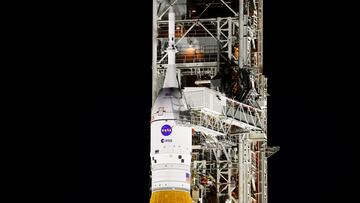What is the goal of the NASA CAPSTONE mission to the moon?
The first step in the space agency’s Artemis mission hopes to build the foundations for a way-point for further space exploration.

In the early hours of Tuesday morning the Cislunar Autonomous Positioning System Technology Operations and Navigation Experiment, also known as CAPSTONE, launched from the Mahia Peninsula in New Zealand.
The craft is a key piece in NASA’s attempt to build a lunar space station for both commercial and international partners. Tuesday’s launch was a joint venture between NASA and commercial space organisation Rocket Lab, amongst other companies.
“CAPSTONE is an example of how working with commercial partners is key for NASA’s ambitious plans to explore the Moon and beyond,” said Jim Reuter, associate administrator for the Space Technology Mission Directorate. “We’re thrilled with a successful start to the mission and looking forward to what CAPSTONE will do once it arrives at the Moon.”
As of Wednesday, 29 June the craft is still in low-Earth orbit and it will take a long time to reach its target of the lunar orbit. CAPSTONE is mounted to Rocket Lab’s Lunar Photon, which will continue beyond the moon and into deep space as part of a separate mission. The Lunar Photon craft was specifically designed for this endeavour and will complete between six and eight days of lunar orbits before breaking from CAPSTONE.
Watch the Artemis I launch live
What is the point of NASA’s CAPSTONE mission?
The joint launch between NASA and Rocket Lab has been described as a watershed moment for the burgeoning private space industry, one that brings governmental space agencies closer to the market than ever before.
For NASA the end goal of this particular mission is to aid the re-emergence of manned voyages to the moon in the next few years. This mission will play a key role in the building of NASA’s Artmeis program which is heralded to unlock a new era of space exploration.
The CAPSTONE mission aims to bring a CubeSat device into the moon’s orbit to form part of a platform, known as Gateway. NASA hope that this station can be used as a way-point for lunar landers, a transfer junction for missions further afield and a resupply hub for astronauts exploring the moon.
CAPSTONE’s CubeSat device is only the size of a microwave oven and weighs around 55 pounds and was manufactured by Tyvak International, another private company involved in the mission.
Alongside Rocket Lab and Tyvak, three other private partners (Advanced Space, Stellar Exploration, Tethers Unlimited) are involved in the joint enterprise.






